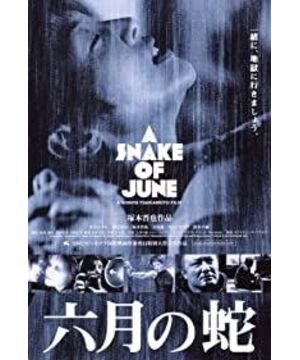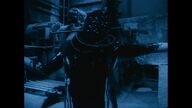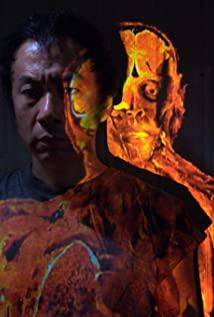The second part is the male symbol, looking at the family from the husband's point of view. The husband is a person with a serious cleanliness addiction, and he can't even stand the stench of his own feces, especially when it comes to the couple's sexual affairs (ironically, Lunzi still wants to complete the compulsive cleaning for him, as a psychologist) she should know it's pointless). The scene of his kidnapping was too surreal to interpret it as a dream or a close-up of his subconscious (the same scene later, someone said: "This is hell"), and he was forced to take it with him. A blindfold with a small hole in the front to watch a man and a woman have sex, and then the eye mask's holes are enlarged, as if it was an immoral voyeur, and then what should be witnessed - the man and woman were in the water just now. Drowning in the tank is a surreal version of the custom of "dipping the pig cage", which means the same as the pig cage, and the purpose is to execute the lustful people. From the grammar of dreams, his attitude towards sex is evident here. The way he watches here is very interesting. He watches with many of himself, which implies that his ascetic values are projected to others in an aggressive manner, and he longs for others to abide by this principle with himself, but in reality The first to bear the brunt, of course, is his wife.
The third paragraph is an indescribable symbol with a circle in the middle and arrows in all three directions, but there is no doubt that this symbol also has a gender connotation. In this passage, an important figure, the photographer man, has become active in front of the camera. It can be speculated that this symbol is related to him, which can be understood as his "super-gender", which shows that he has surreal abilities. For example, snake-like sexual organs, weird kidnappings, abnormal mobility, etc., and his actor is the director, an identity who has the ability to transcend the incident. But I prefer to understand it as the relationship between these three people. In the previous paragraph, the male symbol arrow is not vertically upward, but 45 degrees to the right (web font), which may be a symbol of the castration of male power. , and another arrow that appears in the next paragraph is 45 degrees to the left, overlapping with ♀ and ♂ to the right to form a graphic that gives a complete feeling. Let's boldly guess that the photographer man played such a role in the family, and he "saved" the couple.
The whole story started because of him. Lunzi helped him by accident as a psychologist (not the real her), and since then, he has been like a boulder crashing into a calm lake, attacking the symbolic order that Lunzi's family is accustomed to. We might as well use this as a starting point to draw the main line of the movie: photographer man——→Lunzi (liberation desire)——→husband (the liberation in Lunzi’s rain re-awakens her husband’s sexual desire)——→photographer (the photographer humiliates Lunzi) When he was a husband, when he was drenched in the mud that symbolized filthy sexual desire, his subconscious was again featured in the "Pig Cage Scenario", this time he himself was placed in a pig cage and surrounded by other selves who symbolized the superego. Looking at the drowning, during the flashback of Lunzi's nakedness in the rain, this shows that he agreed with the awakening of sexual desire in the pain, and the id won the victory in the way of death. The awakening of sexual desire and sexual jealousy followed, and he changed his mind. In his cowardly and submissive posture, he grabbed the gun and killed the photographer. What he pursued was no longer Lunzi's photos, but Lunzi's fresh body at home).
The title of the film is "Snake of June", and the only thing that looks like a snake in the film is the tube-shaped object that the photographer used to wrap around Lunzi's husband. No matter how you look at it, it looks like his sexual organs. "Men's ability" to show off his power, thus issuing a declaration to compete for Lunzi. But also on the male photographer, from the above story structure, it is itself a ring, a "ouroboros" - starting with the fear of death and ending with the death caused by "duel", like a bite Snake with its own tail. Between the fear of death and death, a chain of desires plays out. Ouroboros is a symbol that symbolizes reincarnation, infinity, perfection and many other anthropological meanings. This film gives this snake the body of desire - because of desire, people are no longer afraid of death, but also because of desire, people have to end up. Towards death, this may be an excellent interpretation of "to live to death".
Finally, I would like to add that we can completely rewrite the main line of the plot just drawn with a feminist vision: Lunzi - → (arousing desire) Photographer - → Lunzi (liberation desire) - → Husband (Lunzi in the rain) Emancipation reawakens the husband's libido) - → Lunzi (to gain the husband's love). The Ouroboros became the symbol of Lunzi, so this story becomes the story of Lunzi's self-salvation from the morbid patriarchal culture. However, it should not be forgotten that Lunzi's husband is a repressed person like Lunzi. What is holding him back? There is no explanation, perhaps it is the "big Other" of social culture, or it may be childhood experience. In short, it was not only Lunzi who was redeemed, but a family in crisis.
View more about A Snake of June reviews








